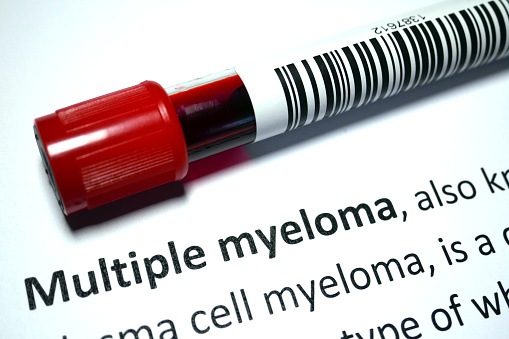
Researchers from the Karolinska Institutet in Stockholm, Sweden, evaluated the efficacy of the BCL-2 inhibitor venetoclax for the treatment of relapsed/refractory multiple myeloma (MM). The findings from this study were published in the American Journal of Hematology.
“Although currently not Food and Drug Administration (FDA)-approved to treat [patients with] MM, there is a growing number of reports indicating its efficacy as a salvage therapy for these patients, especially for those with the t(11;14) chromosomal marker,” explained the study authors. “These studies, however, have also indicated that venetoclax given at doses ≥400 mg/day can cause serious adverse events (AEs) especially when administered with bortezomib, commonly related to infections.”
For this retrospective study, the researchers evaluated outcomes for 22 patients with relapsed/refractory MM treated with a venetoclax-based quadruplet regimen at their institution. Patients received oral venetoclax 100–250 mg daily in combination with low-dose bortezomib, daratumumab, and dexamethasone. All patients had previously received a proteasome inhibitor and the majority (96%) received an immunomodulator prior to venetoclax initiation. The median number of prior lines of treatment was 3, and median follow-up was 9 months.
Partial response or better in one-third of patients
Overall, 6 patients (33%) achieved a partial response or better to treatment. The median time on treatment was 7.2 months. For patients who achieved at least a partial response, median treatment has not yet been met, with a minimum treatment length of 15 months. There was no difference in baseline characteristics between patients who did and did not achieve at least a partial response.
Ten patients in the cohort had the t(11;14) chromosomal marker. The overall response rate for patients without this chromosomal marker was 31%, compared to 80% of patients with the marker.
Treatment-emergent AEs occurred in 20 patients (80%). According to the investigators, all cases were manageable and there were no deaths associated with treatment. Neutropenia was reported in 28% of patients, and thrombocytopenia also occurred in 28% of patients. The most common non-hematologic AE was nausea, occurring in 32% of patients.
Predicting venetoclax response via IHC stains
In addition to examining treatment outcomes, the investigators also examined whether immunohistochemical (IHC) stains on bone marrow samples were predictive of response. The team evaluated bone marrow samples from 20 patients before and after treatment with venetoclax. They found no significant difference in CD138-positive MM cells between patients who achieved at least a partial response and those who did not. The ratio of frequency of BCL2 and MCL1 expression was significantly higher among patients that achieved at least a partial response (P=0.031). These findings were similar across a cohort of samples from patients with newly diagnosed MM (P=0.028).
“The current study demonstrates that venetoclax is effective in the treatment of heavily pre-treated [patients with MM]…with mild side effects,” wrote the study authors in conclusion. “Our data also highlight the importance of using molecular markers for the prediction of response to treatment with venetoclax. We show that the usage of IHC on bone marrow samples, at any stage of the disease and before the exposure to venetoclax, can provide clinicians with a simple tool to predict responses in MM patients with t(11;14).”







 © 2025 Mashup Media, LLC, a Formedics Property. All Rights Reserved.
© 2025 Mashup Media, LLC, a Formedics Property. All Rights Reserved.